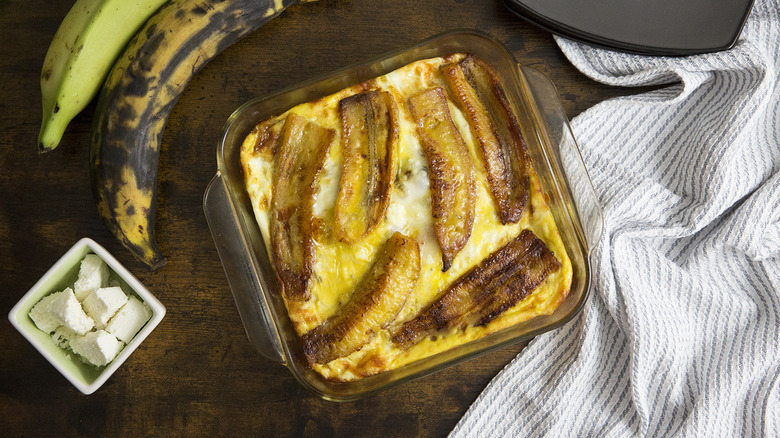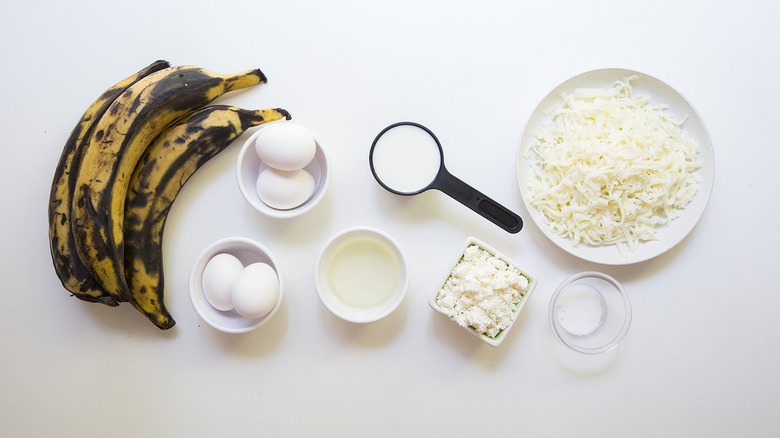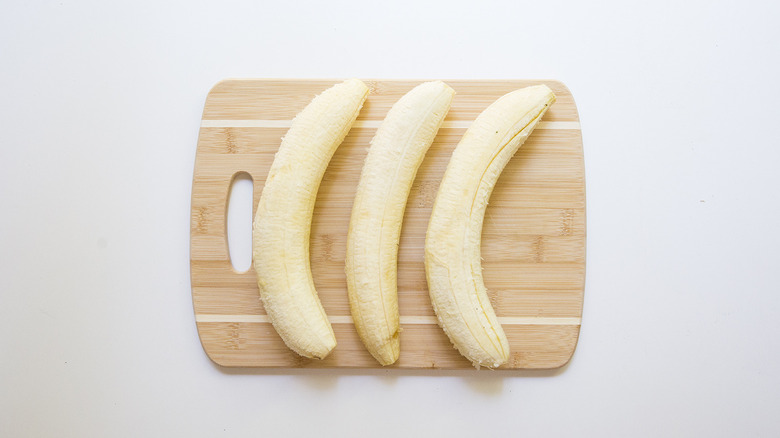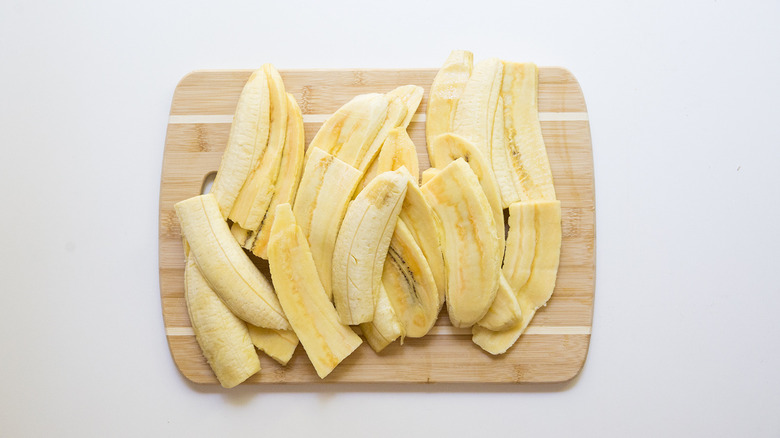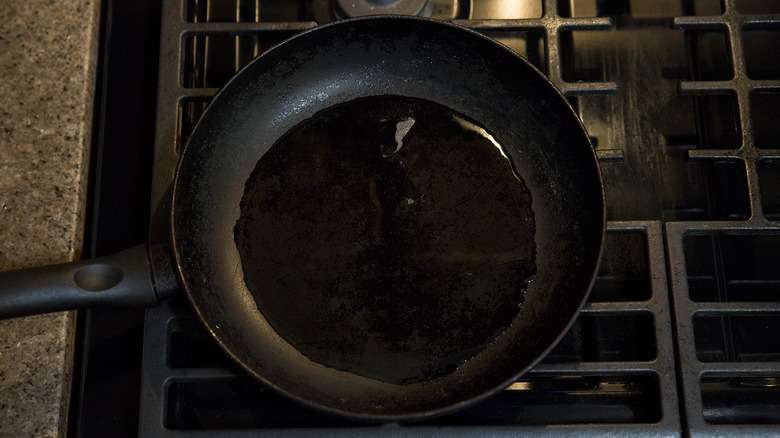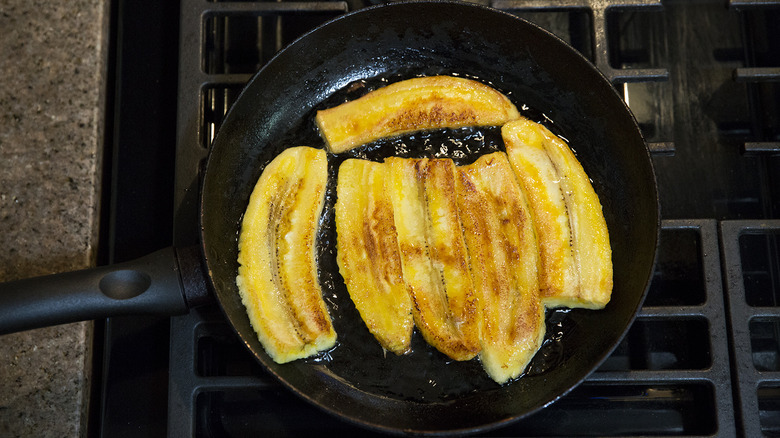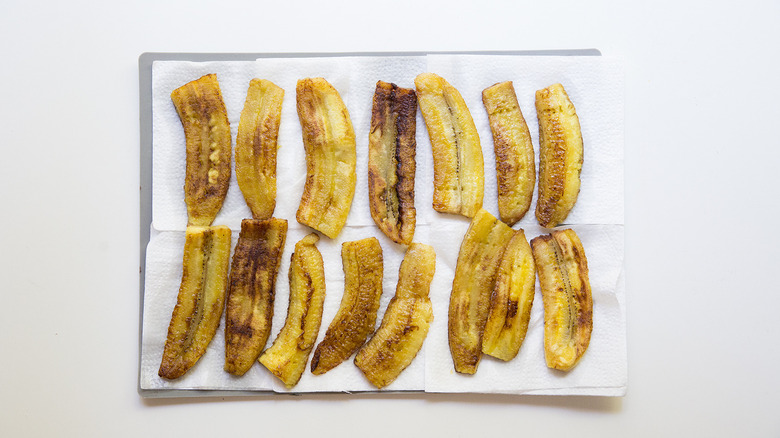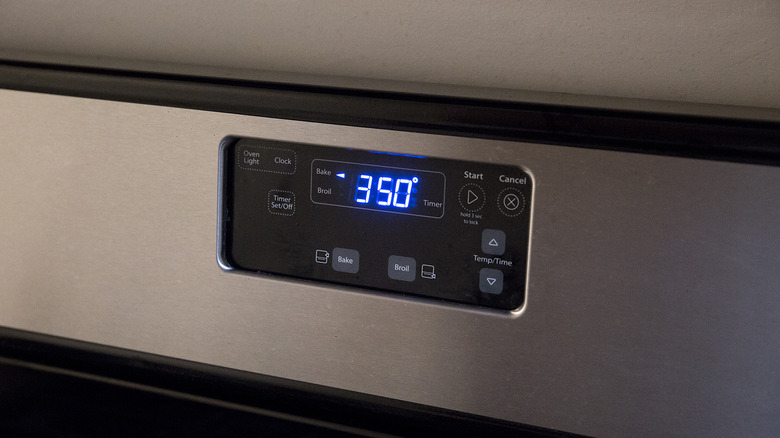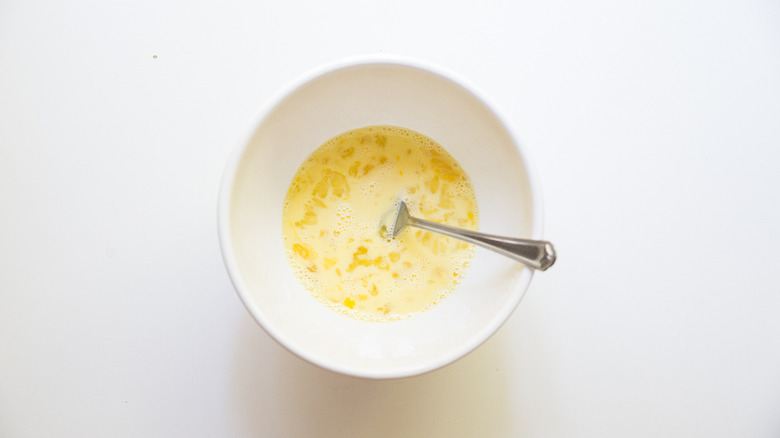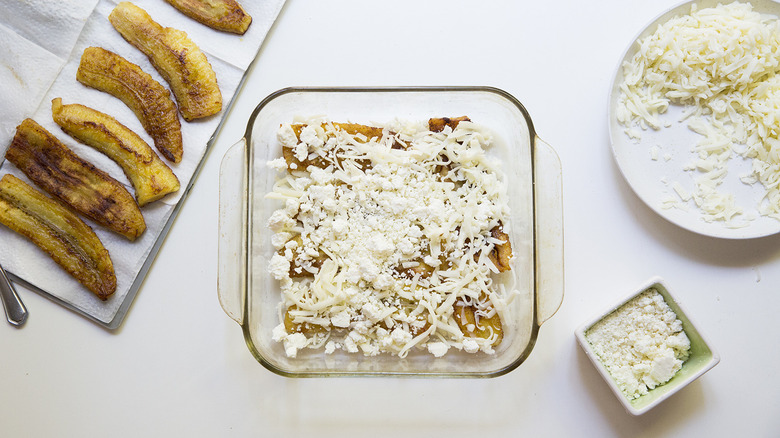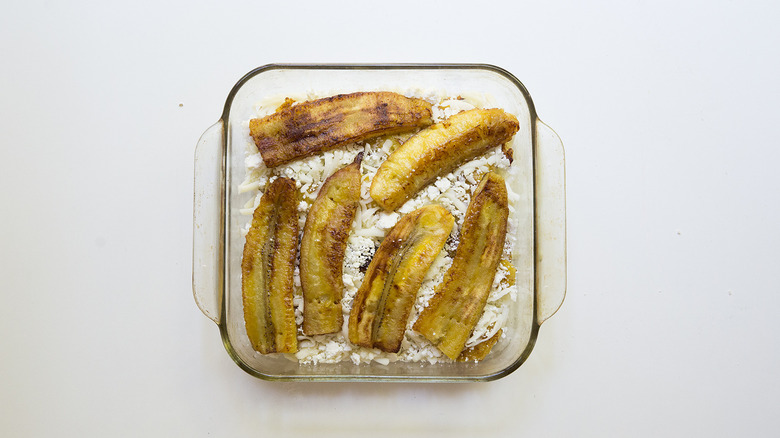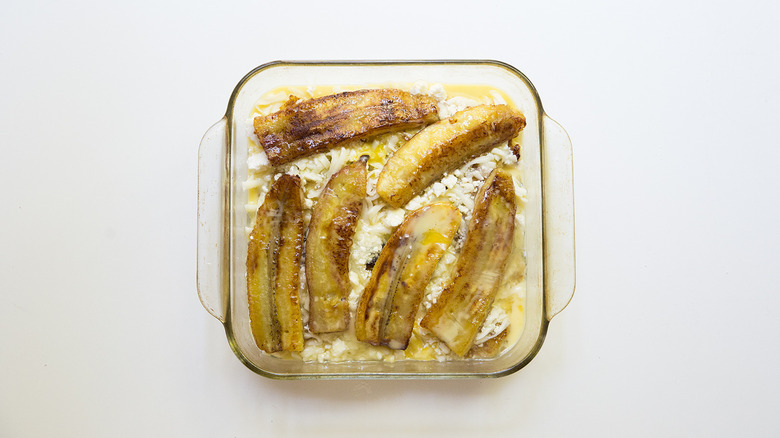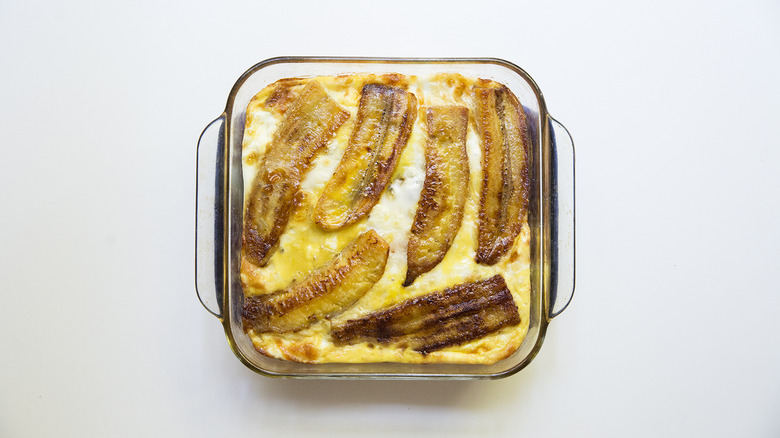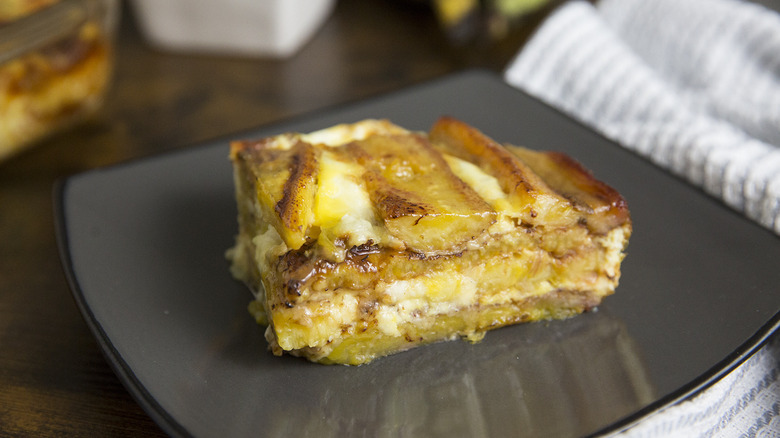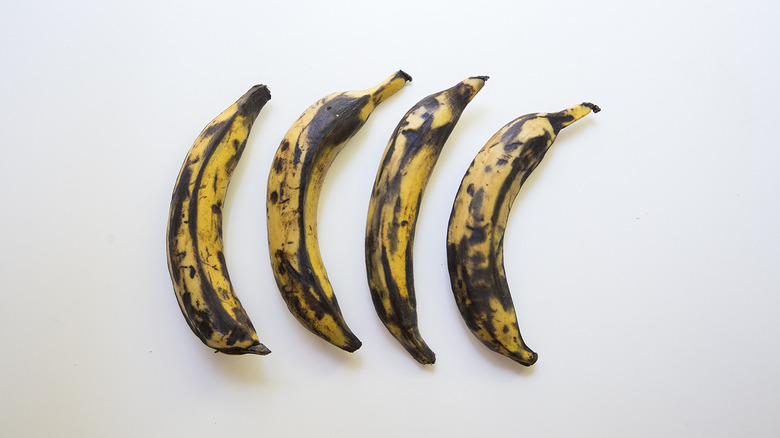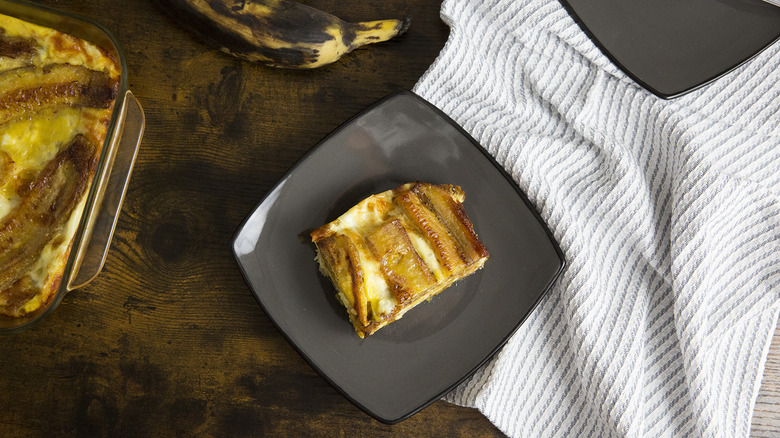Torta De Plátano (Cheesy Plantain Casserole) Recipe
Plantains are available in many supermarkets and grocery stores in the United States, but not everyone knows what to do with them. Sweet plantains (the ripe yellow kind) can be used in baking with delicious results. One example is the Venezuelan torta de plátano, a kind of baked plantain casserole consisting of alternating layers of fried sweet plantain slices and cheese. It's also found in Mexico, where it goes by the name of pastel de plátano (both torta and pastel mean cake in English). If you think this dish resembles a kind of plantain lasagna, you're right. Many Italians immigrated to Venezuela in the past, and they influenced the culture and cuisine of the country.
Recipe developer Michelle Bottalico has created a recipe for torta de plátano with ingredients that are easier to find in the U.S. While the original uses Venezuelan cheeses like queso blanco duro rallado mixed with a soft melty cheese like mozzarella, we mix mozzarella with crumbled cotija for a strong salty flavor similar to the original. After the plantains and cheese are layered in a baking dish lasagna-style, an egg and milk mixture is poured over it so the casserole will hold together after baking and will be easy to slice. If you're a fan of lasagna and like to mix things up, try adding this delicious Venezuelan dish to your casserole repertoire.
Gather your torta de plátano ingredients
For this recipe, you will need 3 large ripe plantains. Ripe plantains are the yellow kind. The deeper the yellow color and the more black spots they have, the riper and sweeter they are, so choose pieces according to your taste. Don't substitute unripe green plantains, because the dish is supposed to be sweet. If you can only find green ones, you can wait for them to ripen (just like bananas) before making the dish. You'll also need vegetable oil for frying the plantain slices.
The other ingredients are eggs, milk, sugar, mozzarella, and cotija cheese. Cotija is very salty, so there is no additional salt in the recipe. If you don't have cotija and only use mozzarella or other mild cheeses, add some salt to the egg mixture.
Step 1: Peel the plantains
Cut off the ends of the plantains, cut a vertical slice through each peel from end to end, and peel off the skin.
Step 2: Slice the plantains
Cut each plantain in half and then cut each half into 4 lengthwise slices about ¼ inch wide to end up with 24 total slices.
Step 3: Heat the oil
Heat ⅛ inch of oil in a frying pan on medium-low until bubbling.
Step 4: Start frying the plantains
Place as many plantain slices as will fit in a single layer in the pan and fry them for 3-5 minutes per side until browned and crispy.
Step 5: Finish frying all of the plantains
Remove the plantain slices and place them on paper towels to absorb excess oil. Repeat this process in batches until all of the plantains are fried.
Step 6: Preheat the oven
Preheat the oven to 350 F.
Step 7: Prepare the egg mixture
Crack the eggs into a medium bowl, add the milk and sugar, and whisk well. Set aside.
Step 8: Start layering plantains and cheese
Place 6 plantain slices on the bottom of an 8 x 8-inch baking dish and top them with ⅓ of the mozzarella and ⅓ of the cotija.
Step 9: Finish layering plantains and cheese
Repeat the previous step twice to form 2 more layers of plantains and cheese, and then finish with a final layer of plantains on top.
Step 10: Pour the egg mixture on top
Pour the egg mixture on top of the plantains and cheese.
Step 11: Bake the casserole
Place the dish in the oven and bake for 40-45 minutes until the eggs are set and the top is browned.
Step 12: Serve the torta de plátano
Let cool for 5 minutes and serve.
Torta de Plátano (Cheesy Plantain Casserole) Recipe
Venezuelan torta de plátano is a baked plantain casserole consisting of alternating layers of fried sweet plantain slices and a mix of salty and creamy cheeses.
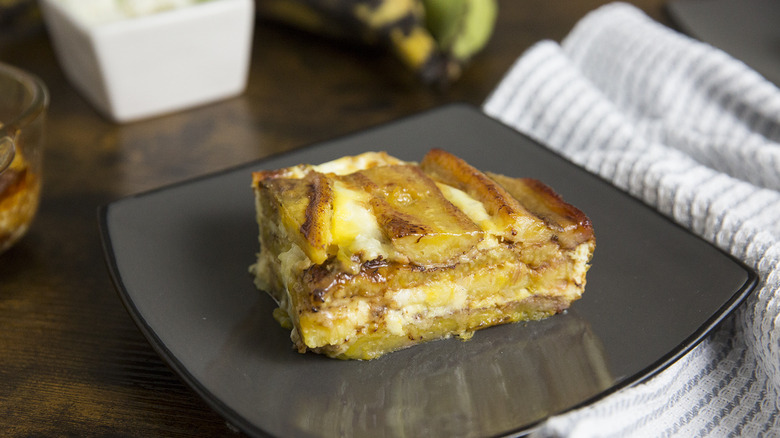
Ingredients
- 3 large ripe (yellow) plantains
- Vegetable oil for frying
- 4 eggs
- ½ cup milk
- 1 ½ teaspoons sugar
- 7 ounces mozzarella, shredded
- ¾ cup crumbled cotija cheese
Directions
- Cut off the ends of the plantains, cut a vertical slice through each peel from end to end, and peel off the skin.
- Cut each plantain in half and then cut each half into 4 lengthwise slices about ¼ inch wide to end up with 24 total slices.
- Heat ⅛ inch of oil in a frying pan on medium-low until bubbling.
- Place as many plantain slices as will fit in a single layer in the pan and fry them for 3-5 minutes per side until browned and crispy.
- Remove the plantain slices and place them on paper towels to absorb excess oil. Repeat this process in batches until all of the plantains are fried.
- Preheat the oven to 350 F.
- Crack the eggs into a medium bowl, add the milk and sugar, and whisk well. Set aside.
- Place 6 plantain slices on the bottom of an 8 x 8-inch baking dish and top them with ⅓ of the mozzarella and ⅓ of the cotija.
- Repeat the previous step twice to form 2 more layers of plantains and cheese, and then finish with a final layer of plantains on top.
- Pour the egg mixture on top of the plantains and cheese.
- Place the dish in the oven and bake for 40-45 minutes until the eggs are set and the top is browned.
- Let cool for 5 minutes and serve.
Nutrition
| Calories per Serving | 685 |
| Total Fat | 50.6 g |
| Saturated Fat | 10.8 g |
| Trans Fat | 0.3 g |
| Cholesterol | 149.8 mg |
| Total Carbohydrates | 46.7 g |
| Dietary Fiber | 2.3 g |
| Total Sugars | 25.8 g |
| Sodium | 425.6 mg |
| Protein | 16.4 g |
What's the difference between green and yellow plantains?
If you're not familiar with plantains, they look like huge, thick bananas. In fact, plantains are closely related to bananas and are grown around the world in tropical areas. Unlike common bananas, plantain skin is tough and hard to remove, and the flesh is much more starchy and therefore not eaten raw. Plantains are easy to find in most supermarkets. A well-stocked store will carry both green and yellow plantains, but they're all the same kind of plant. Green just means they're unripe while the yellow ones are ripe. In fact, you'll see them going from solid green to light green, to light yellow, to dark yellow with black spots to almost all black as they ripen.
Recipes call for plantains in specific stages of ripeness. Green plantains are used in savory recipes and hold their shape better when fried. Besides frying, they can be boiled, mashed, used in soup, made into chips, and stuffed with meat, cheese, or beans, just to name a few methods. Ripe plantains are often prepared using similar methods — that is, boiled, fried, mashed, and stuffed, but they taste very different because they're sweet and have a soft texture. Ripe plantains can even be used in desserts. For example, they can be cooked with sugar, sweet wine, and spices and served with ice cream.
Are there other ways to make this torta de plátano?
This recipe has plenty of variations. If you love sweet plantains, you can use four to five plantains instead of three in order to arrange them without spaces between the pieces for a denser plantain flavor. You could also bake the plantains instead of frying them, with the option to then mash the baked plantains and spread them in even layers in the pan instead of laying down slices.
To emphasize sweetness, you can make a liquid sugar mixture to pour on top of the assembled dish before baking it. You'll start with a kind of unprocessed dark-colored sugar called panela (also known as piloncillo), which is sold in dense brown cakes or cones. Panela or piloncillo is similar to brown sugar but it's unrefined and made directly from sugar cane juice (while brown sugar is made by mixing refined white sugar with molasses). The panela is melted and mixed with optional spices like cinnamon or nutmeg before being drizzled on top.
You can also switch up the cheese. Original Venezuelan versions use queso blanco duro rallado or queso blanco semiduro salado mixed with a soft melty cheese like mozzarella. The first is a hard white cheese for grating, and the second is a semi-hard salty white cheese. We found cotija easier to source in order to add that strong, salty flavor, but you could also add feta or ricotta salata to mozzarella to achieve the same effect.
